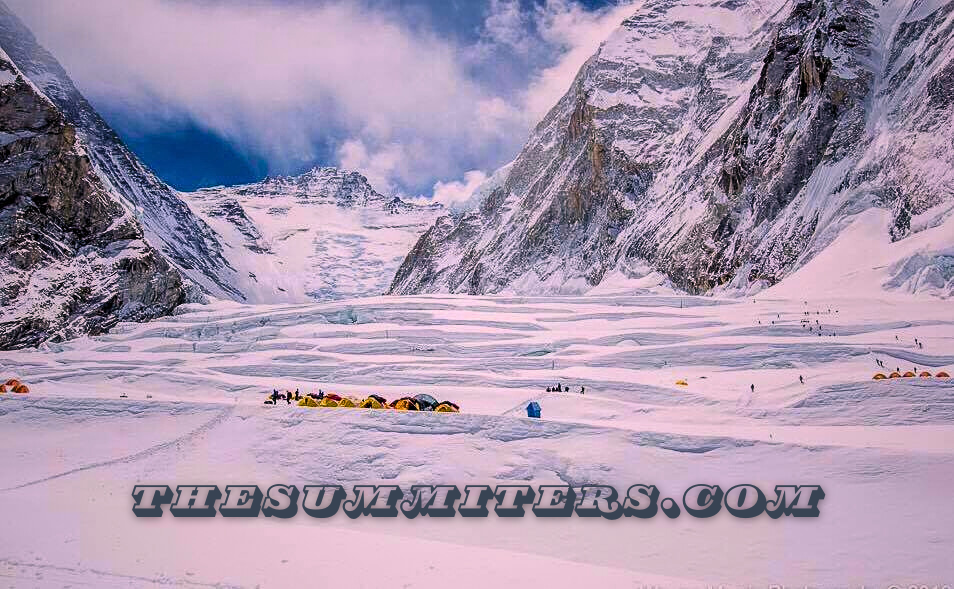Last spring, cargo drones underwent rigorous testing on Mount Everest, and the results were nothing short of remarkable. So successful were these tests that Nepalese authorities have now decided to implement the use of drones for transporting gear and retrieving rubbish between Camp 1 and Base Camp.
This initiative promises numerous benefits. Drones offer a cleaner and more cost-effective option to helicopters. More importantly they provide a much secure solution for the brave janitors who risk their lives multiple times each season crossing the unreliable Khumbu Icefall. Since Everests first ascent in 1953 nearly 50 individuals have perished in this perilous area, making the introduction of drones a significant step forward in enhancing safety on the mountain.
Putting Safety at the Forefront
“The use of drones on Everest represents a natural progression in the application of technology to Himalayan mountaineering,” said Dawa Steven Sherpa of Asian Trekking in an interview with ExplorersWeb. While helicopters used to manage these tasks they did so at significant risk and cost. Drones offer a much safer and more affordable solution, revolutionizing how we approach these challenging environments.

“Drones will save lives,” affirmed Mingma G of Imagine Nepal in an interview with ExplorersWeb.
Mingma G has witnessed firsthand the deadly toll the Khumbu Icefall can take. Just this past spring, he suffered the heartbreaking loss of three team members when a section of ice collapsed.
Drones will also help reduce the crowding at the Icefall and significantly increase the amount of rubbish that can be brought down, he added.
This change is likely to be welcomed by commercial clients as well. Dawa Steven Sherpa pointed out, “There has always been some guilt and apprehension among clients, knowing that sherpas are risking their lives to carry loads.”
Reaching New Heights: Expanding Drone Use to Other Peaks
This adventurous initiative will extend beyond Everest to other peaks in the Khumbu region. The Sagarmatha Pollution Control Committee Khumbu Pasang Lhamu Rural Municipality and Airlift Technology Pvt. Ltd and have signed a announcement of understanding to authority advanced drone technology for efficient waste management across the mountains of the Khumbu region.
The drones will be used by Chinese company Da Jiang Innovations (DJI). A successful test of one of their models last spring prompted this policy change.
The Kathmandu Post reported that the DJI FlyCart 30, a long-distance heavy-lifter drone, can transport 234kg of cargo per hour between Camp I and Base Camp. This feat would typically require at least 14 porters working for six hours.
For a closer look, check out this video about cargo drones on Everest.
Will Local Jobs Be Affected?
There are concerns that the introduction of drones could reduce job opportunities for porters, as expeditions will require fewer people to carry loads. However, many stakeholders see this change as a chance for sherpas to advance to more rewarding positions.
Dawa Steven Sherpa offers a positive perspective: “With drones handling the heavy lifting, sherpas will have more time to focus on assisting clients during their climbs. This shift allows them to earn more through bonuses and tips. Clients will still need sherpas for the climb to the summit, so their roles will remain essential and secure.”
Looking to the future, Dawa Steven envisions a bright path for the Sherpa community. “We anticipate a reduction in the number of sherpas working in mountaineering, but those who remain will have higher levels of training, such as UIAGM certification. The industry is already shifting towards sherpas taking on guiding roles rather than just carrying loads. Drones will be a key factor in accelerating this transition.”

Jagat Bhusal from the Khumbu Municipality revealed to The Kathmandu Post that there are plans to train sherpas as drone pilots, offering a new skill set for the local community.
While drones will manage cargo up to Camp 1 at 6,000 meters, porters will continue to play a crucial role in transporting loads through the more challenging section between Camp 1 and Camp 2 at 6,400 meters, navigating the rugged terrain of the Western Cwm.
Ultimately, drones have their limits. When it comes to reaching the highest mountain nothing compares to the sherpas unmatched skill and skills. Their ability to pilot and work in extreme conditions remains indispensable for climbing the world’s tallest peaks.
Is Camp 2 Set to Become the New Advanced Base Camp?
Drones could significantly alter climbing strategies. Dawa Steven mentioned that his sherpa team is planning to be based at Camp 2 in the future. From this location, they would pick up loads from Camp 1 and stock the higher camps, reducing their trips through the treacherous Icefall to just one round trip.
Commercial climbers are already refining their approaches by acclimatizing on less demanding peaks, utilizing hypoxic training at home, and using supplemental oxygen at Camp 2. These measures help them reduce the number of rotations needed and improve their overall efficiency.
Progress in Waste Disposal, but More Work is Essential
This new measure aims to address the growing issue of litter beyond Base Camp. Last spring marked a positive shift with improvements in managing human waste and efforts by teams to bring down their gear as they retreated. Drones will play a crucial role in this cleanup effort, but significant work remains, especially around Camp 4, situated nearly 8,000 meters on the South Col. There’s still a long way to go to restore the mountain to its pristine condition.